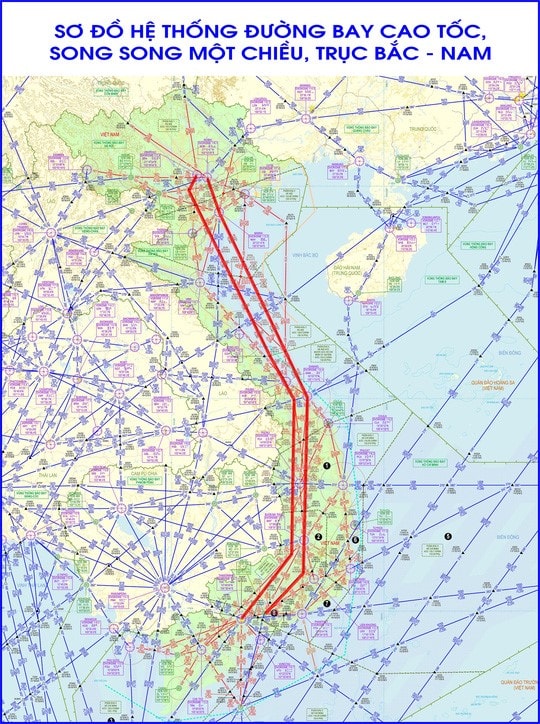Opening of North-South expressway
From 7:00 a.m. on August 18, the "North-South parallel, one-way expressway flight system" was officially put into operation under the supervision of the Civil Aviation Authority of Vietnam.
Vietnam Air Traffic Management Corporation (VATM) said that this unit officially put into operation the "High-speed, parallel, one-way North-South route system", based on advanced navigation features (RNAV5) starting from August 18.
According to the Vietnam Air Traffic Management Corporation, the current flight path on the North-South axis is a two-way flight path with limitations due to the high volume of aircraft operating, large intersections, and aircraft operating on the two-way flight path frequently changing altitude to avoid each other.
Therefore, in recent times, the Civil Aviation Authority, VATM and relevant military agencies have been researching and building a system of high-speed, parallel, one-way North-South routes based on advanced navigation features (RNAV5) according to the standards of the International Civil Aviation Organization (ICAO).
 |
| The parallel one-way "high-speed air route" diagram along the North-South flight axis has been in operation since August 18. |
This one-way parallel flight system is being applied by advanced countries in the world to prioritize long-distance flights at optimal altitude; the modern, popular type of aircraft today in the form of an air highway between major airports (this flight system in the world is called a sky highway).
Previously, North-South planes traveling in both directions shared the same route, avoiding each other based on altitude. But with the one-way parallel flight path, it is divided into two parallel horizontal routes, each in one direction and straighter than the previous flight path.
If this one-way parallel flight path is considered as a highway, then planes taking off and landing at airports along the way such as Da Nang and Cam Ranh will enter and exit the highway by the service road. When planes enter the highway, traffic will move faster, the throughput capacity on this flight path will be higher, and air traffic control and pilots will be able to handle situations more easily.
According to VATM, Vietnam's flight information region is located in the center of the corridor connecting key economic regions of West and Southwest Asia with East and Northeast Asia, with the highest flight density and growth rate in the world; annual growth rate over 17%.
There are over 2,000 flights in Vietnam's skies every day, and Vietnam's flight operations output in 2016 will reach over 730,000 flights. Vietnam's North-South route is ranked as one of the busiest routes in the world, with nearly 700 flights a day, accounting for about 35% of Vietnam's entire flight network.
According to Zing.vn
| RELATED NEWS |
|---|
